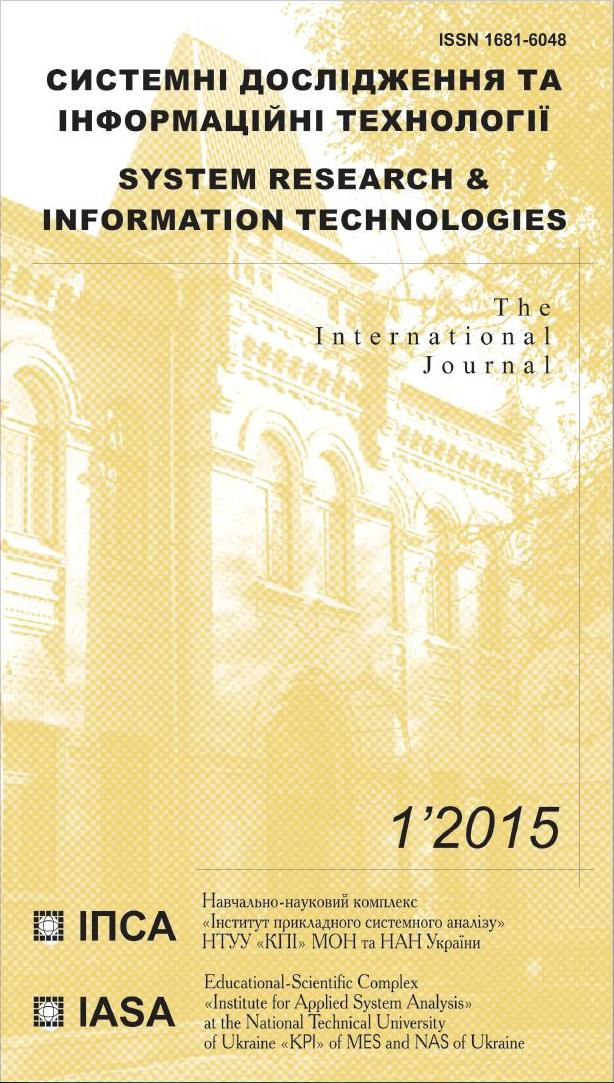Neural network synthesis based on evolutionary optimization
Abstract
The evolutionary approach for neural network structural synthesis is considered in this paper. The new method of multimodal evolutionary search with a chromosome clustering is offered. The developed method is based on the idea of simultaneous search of several optimums, thus chromosomes are grouped in clusters on their arrangement in a search space. So stable subpopulations in different clusters are formed, diversity of search is provided, and convergence to different local minima is reached that allows to find closer to optimal architectures of neural networks. Software implementing proposed method is developed. The experiments with proposed method in practical problem solving were conducted.References
Ripley B. Pattern Recognition and Neural Networks. — Cambridge: Cambridge University Press, 2008. — 416 p.
Yao X. Evolving Artificial Neural Network // Proceedings of the IEEE. — 1999. — 87, № 9. — P. 1423–1447.
Haykin S. Neural Networks: A Comprehensive Foundation. — New Jersey: Prentice Hall, 1999. — 842 p.
Haupt R., Haupt S. Practical Genetic Algorithms. — Hoboken: John Wiley & Sons, 2004. — 272 p.
Siebel N.T., Kassahun Y. Learning Neural Networks for Visual Servoing Using Evolutionary Methods // Hybrid Intelligent Systems: Sixth International Conference, 13–15 December 2006, Auckland: Proceedings. — Los Alamitos: IEEE, 2006. — P. 6–14.
Rocha M., Cortez P., Neves J. Simultaneous evolution of neural network topologies and weights for classification and regression // Computational Intelligence and Bioinspired Systems. — Berlin: Springer, 2005. — P. 59–66.
Thammano A., Meengen A. A New Evolutionary Neural Network Classifier // Advances in Knowledge Discovery and Data Mining. — Berlin: Springer, 2005. — P. 249–255.
Siebel N., Krause J., Sommer G. Efficient learning of neural networks with evolutionary algorithms // Pattern Recognition: 29th DAGM conference on: proceedings. — Berlin: Springer, 2007. — P. 466–475.
Ursem R.K. Multinational Evolutionary Algorithms // Evolutionary Computation: CEC 99 Congres: proceedings. — Los Alamitos, IEEE, 1999. — P. 1633–1640.
Shimodaira H. A Diversity Control Oriented Genetic Algorithm (DCGA): Development and Experimental Results // Genetic and Evolutionary Computation. — Orlando: Morgan Kaufmann, 2000. — P. 603–611.
Thomsen R., Rickers P., Krink T. A Religion-Based Spatial Model For Evolutionary Algorithms // Parallel Problem Solving from Nature. — Berlin: Springer, 2000. — P. 817–826.
Tsutsui S., Fujimoto Y., Ghosh A. Forking Genetic Algorithms: GAs with Search Space Division Schemes // Evolutionary Computation. — 1997. — 5. — P. 61–80.
Ursem R.K. Diversity-Guided Evolutionary Algorithms // Parallel Problem Solving from Nature. — Berlin: Springer, 2002. — P. 462–471.
Olejnik A.A. Vybor sistemy informativnyh priznakov dlja klassifikatsii transportnyh sredstv na osnove evoljutsionnogo poiska // Komp’juterne modeljuvannja ta intelektual'ni systemy: zbirnyk naukovykh prats' / Za red. D.M. Pizy, S.O. Subbotina. — Zaporizhzhja: ZNTU, 2007. — S. 134–146.

